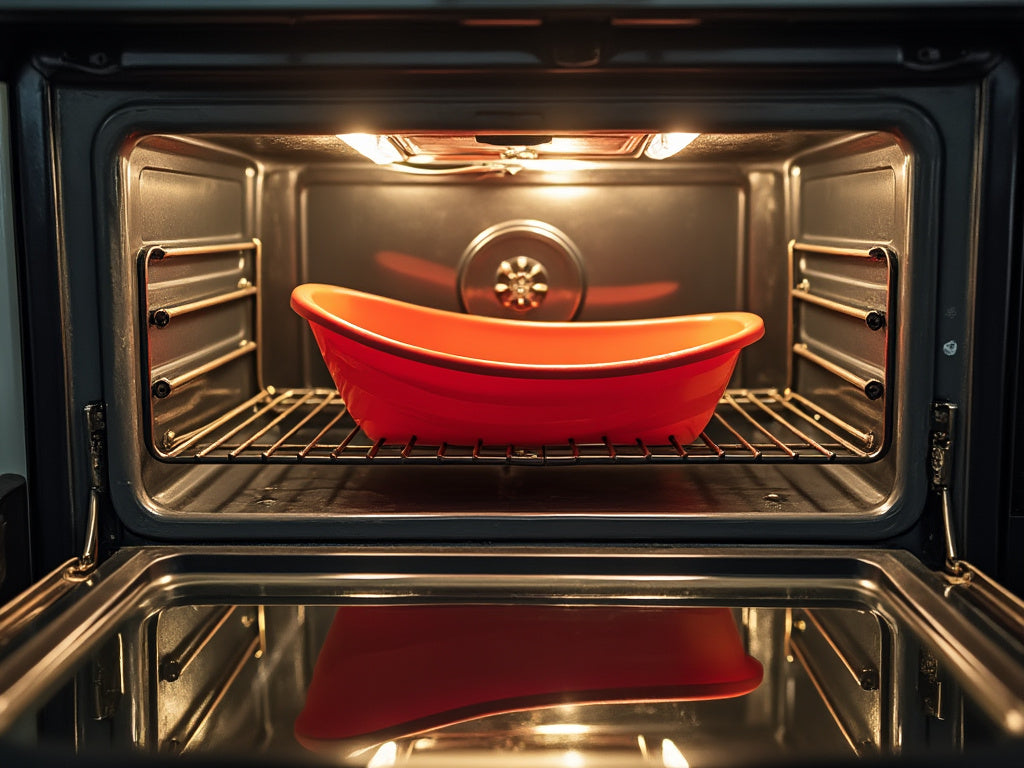The process of annealing is done for different purposes depending on the material. That said - the process will be the same - annealing is the process of heating up the printed parts at a certain temperature for a certain period of time.
Nylon
Our nylon filaments come with our Warp-Free™ technology. This Warp-Free™ technology solves one root of the cause of warping - crystallization.
Indeed, Nylon is known as challenging to print because of its warping behavior, because when printing, the quick formation of crystals within each layers will create a lot of internal stress - resulting in part deformation.
Polymaker’s technology is not only reducing this stress, but it is increasing the mechanical properties of the part. The technology slows down the crystallization rate of the polymer, which prevents it from quickly forming small crystals within each layer as they are printed. Instead, it allows the polymer to slowly build big crystal across layers, since multiple layers have time to be printed before the formation of crystals. These crystals across the layers will also significantly increase the inter layer adhesion. This is also the reason why Polymaker will recommend to anneal the part after the printing process. Annealing ensures the part has reached its highest degree of crystallinity, providing the best thermal and mechanical properties.
This means you are not on a time crunch with our nylon materials to get them in the oven the moment the print finishes, as we recommend with polycarbonate which you will read about shortly. You can get the print into the oven at your convenience - just know after you anneal in the oven, the nylon will be dried out and will slowly moisture condition after. Learn more about moisture conditioning HERE.
Each nylon will have slightly different annealing recommendations, but we generally recommend between 80˚-100˚C for 6-16 hours. This will allow the nylon to fully crystallize.
If you have a print that has very thin walls - to help prevent any warping or deformation of said thin section - we would recommend a gradual heating method. Divide the annealing process into two stages, first keep the temperature at a temperature 20-30 degrees lower than the final temperature for a period of time, and then slowly heat it to the final recommended annealing temperature to avoid rapid heating and internal stress concentration.
Polycarbonate
Polycarbonate has a lot of internal stress creation when being stretched through a small die (nozzle). You can find out more about this stress creation on our Material Science page.
Essentially, polycarbonate likes to print in a very hot environment in order to cool below its glass transition temperature as slowly as possible. If polycarbonate cools too rapidly - then it is very likely that the layers will "crack" and delaminate.
This means the best environment to print polycarbonate would be in a heated chamber printer where the ambient air is above 90˚C, and then you maintain that heated chamber temperature for 2 hours post printing before allowing to cool slowly to room temperature. This increased air temperature will slow down the release of internal stresses and reduce any chances of delamination.
Since most makers do not have a heated chamber that can get above 60˚C, annealing is required right after your PC print finishes. You will want your oven set to 90˚C and already at its set temperature before the print finishes. Then, the moment your print finishes, you will want to take it and put it directly into that oven.
You may need to transfer the print with the build plate, since removing the print from a very hot build plate can be difficult or not possible.
Leave the print in your oven for at least 2 hours, and then let the oven slowly cool to room temperature before removing the print. This additional time at 90˚C will allow the part to very slowly cool and maintain it's layer adhesion strength.
Other Crystalline Polymers
We covered the difference between amorphous and semi-crystalline polymers in our Material Science page for further information.
Some materials - like nylon described earlier - do not reach full crystallization without annealing. This is not due to our technology but just rather a function of the material.
Materials such as Fiberon™ PPS-CF10 and Fiberon™ PET-CF17 are semi-crystalline and therefore do not reach their full heat resistance without being annealed. Each of these materials will have their own annealing recommended settings on their product page with further information in the FAQ.
Other semi-crystalline materials can be annealed though we do not have suggested settings, since annealing runs the risk of deforming the part or changing the dimensions.
Annealing Amorphous Materials
Amorphous materials, such as ABS, ASA, and PETG, do not get nearly the same benefit from annealing as semi-crystalline polymers do. The annealing process is more effective for semi-crystalline materials where crystalline structures can be developed or reorganized.
The benefits to annealing amorphous materials are mainly dimensional stability and residual stress reduction.
We do not have any direct recommendations for annealing amorphous materials, but if you want to try it out, we would generally recommend a low annealing temperature of just below the material's glass transition points. For example ~70°C for PETG, ~95°C for ASA. This will help prevent distortion while reducing residual stress.


 Canada
Canada Global
Global
